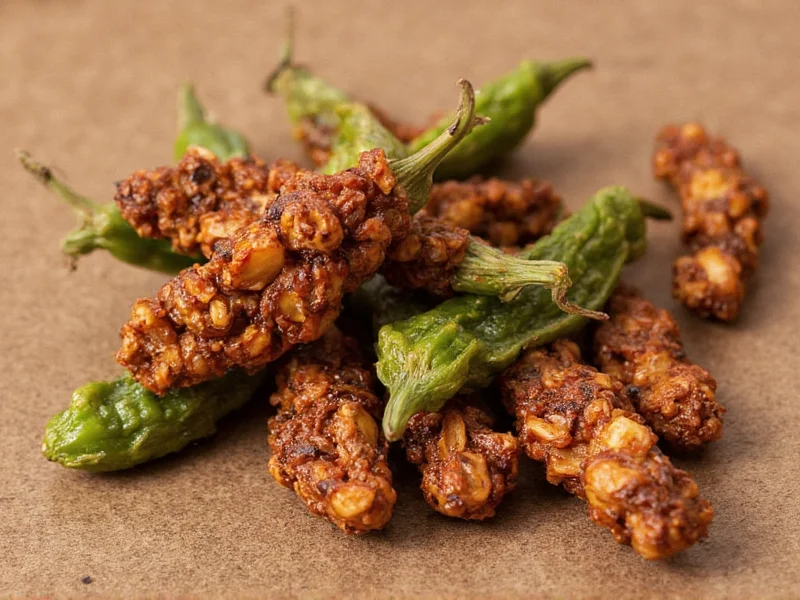Understanding the relationship between chipotle peppers and jalapeños is essential for anyone exploring authentic Mexican cuisine or looking to elevate their cooking with complex flavors. While they originate from the same pepper variety, the processing method creates significant differences in taste, texture, and culinary applications.
The Transformation Process: From Jalapeño to Chipotle
Jalapeños start as fresh green peppers commonly found in grocery stores. When these ripe jalapeños (typically allowed to mature to a red color) undergo a specific smoking and drying process, they become chipotle peppers. This traditional technique, known as ahumado in Spanish, involves slow-smoking the peppers over wood fires—traditionally oak or pecan—which imparts that signature smoky flavor.
The smoking process serves multiple purposes: it preserves the peppers, concentrates their natural sugars, and develops complex flavor compounds through the Maillard reaction. This transformation typically takes several days, with careful temperature control to prevent burning while ensuring complete dehydration.
Key Differences Between Chipotle Peppers and Fresh Jalapeños
While they share the same botanical origin (Capsicum annuum), the processing creates notable distinctions:
| Characteristic | Chipotle Peppers | Fresh Jalapeños |
|---|---|---|
| Processing Method | Smoked and dried | Harvested fresh |
| Flavor Profile | Smoky, earthy, slightly sweet with tobacco notes | Grassy, vegetal, bright heat |
| Heat Level (Scoville) | 2,500-8,000 SHU (concentrated by drying) | 2,500-8,000 SHU |
| Texture | Leathery, wrinkled, flexible when rehydrated | Crisp, firm, juicy |
| Common Forms | Dried whole, in adobo sauce, powder, liquid smoke | Whole fresh peppers |
| Shelf Life | Several months to years when properly stored | 1-2 weeks refrigerated |
Understanding Chipotle Variations
Not all chipotle products are created equal. The most authentic chipotle experience comes from whole dried smoked jalapeños, but you'll commonly find them in these forms:
- Chipotles en Adobo: Whole or chopped chipotles preserved in a tangy, tomato-based sauce with vinegar, garlic, and spices. This popular preparation softens the intense smokiness while adding complexity.
- Chipotle Powder: Made from ground dried chipotles, this seasoning delivers concentrated smoky heat without the moisture of fresh peppers.
- Chipotle Tabasco or Hot Sauce: Vinegar-based sauces featuring chipotle peppers for smoky heat.
- Chipotle Liquid Smoke: A convenient but less authentic option that mimics the smoky flavor without actual peppers.
Culinary Applications and Substitutions
Knowing are chipotle peppers dried jalapenos helps understand when and how to use them effectively in cooking. The smoky depth of chipotles works exceptionally well in:
- Moist cooking environments like stews, braises, and sauces where the smokiness can permeate the entire dish
- Barbecue rubs and marinades where the earthy notes complement grilled meats
- Bean dishes and chili where the deep flavor enhances hearty ingredients
- Mayonnaise and cream-based sauces for a smoky kick
When substituting between fresh jalapeños and chipotles, remember that the difference between chipotle peppers and jalapenos means they aren't direct replacements. As a general rule:
- 1 chipotle pepper (in adobo) ≈ 2-3 fresh jalapeños in terms of heat, but with completely different flavor profile
- For smoky flavor without heat: use 1/8-1/4 teaspoon chipotle powder per jalapeño called for
- For heat without smoke: use fresh jalapeños plus 1/2 teaspoon smoked paprika
Common Misconceptions About Chipotle Peppers
Several myths persist about chipotle peppers vs dried jalapenos:
- Myth: Chipotles are a different pepper variety than jalapeños.
Fact: They are specifically smoked jalapeños—no other pepper type. - Myth: All dried jalapeños are chipotles.
Fact: Only smoked dried jalapeños qualify as chipotles; air-dried jalapeños are called mirasoles and lack the smoky flavor. - Myth: Chipotles are significantly hotter than fresh jalapeños.
Fact: The heat concentration from drying makes them seem hotter, but the Scoville rating range remains similar. The smokiness can mask some heat perception.
Practical Tips for Working With Chipotle Peppers
Maximize your experience with these authentic Mexican ingredients:
- Rehydrating dried chipotles: Soak in hot water or broth for 20-30 minutes until pliable. Reserve the soaking liquid for added flavor in sauces and soups.
- Handling chipotles in adobo: Remove seeds and veins to reduce heat. Chop finely or blend into sauces for even distribution.
- Storage: Keep dried chipotles in an airtight container in a cool, dark place. Transfer opened cans of chipotles in adobo to a glass container and refrigerate for up to 3 weeks.
- Freezing: Portion chipotles in adobo into ice cube trays, then transfer frozen cubes to a freezer bag for convenient single-use portions.
Exploring Authentic Mexican Cuisine
Understanding are chipotle peppers just smoked jalapenos opens doors to authentic Mexican cooking techniques. Traditional mole sauces, adobos, and pipiáns all rely on this smoking process to develop complex flavors. The smoking technique dates back to pre-Hispanic times when indigenous peoples preserved peppers and other foods using smoke.
When exploring recipes that call for chipotles, remember that the quality varies significantly. For the most authentic experience, seek out whole dried chipotles from Mexican producers rather than pre-made sauces, which often contain additives that alter the pure smoky flavor profile.











 浙公网安备
33010002000092号
浙公网安备
33010002000092号 浙B2-20120091-4
浙B2-20120091-4